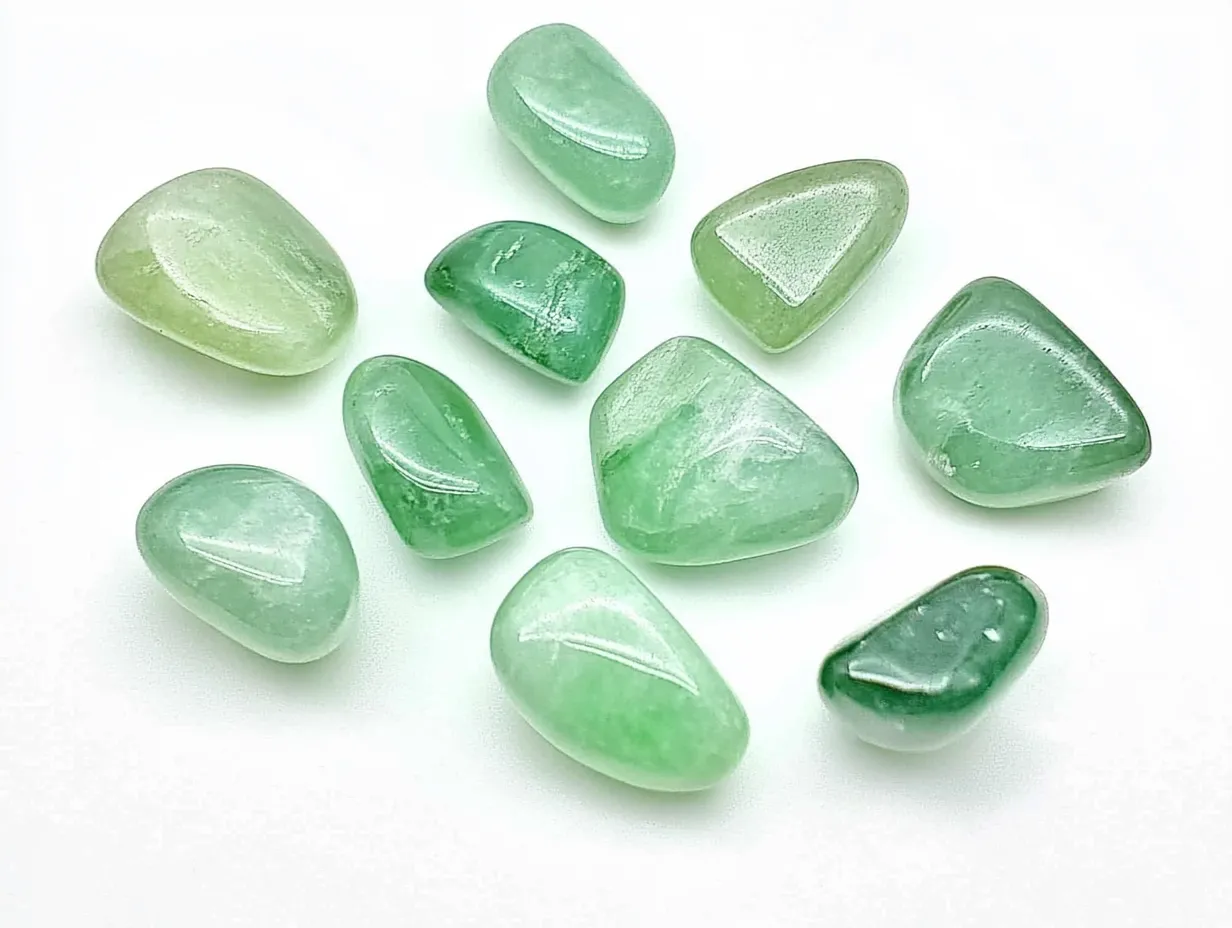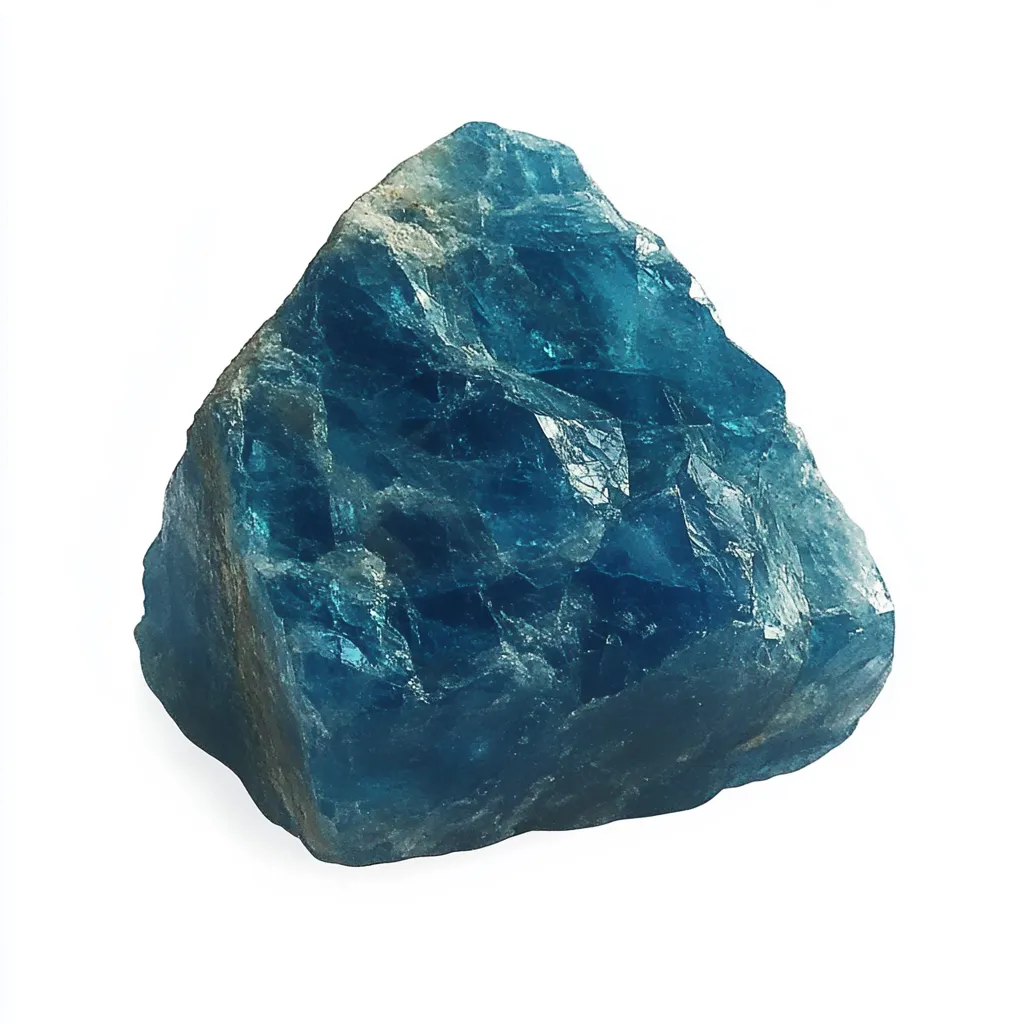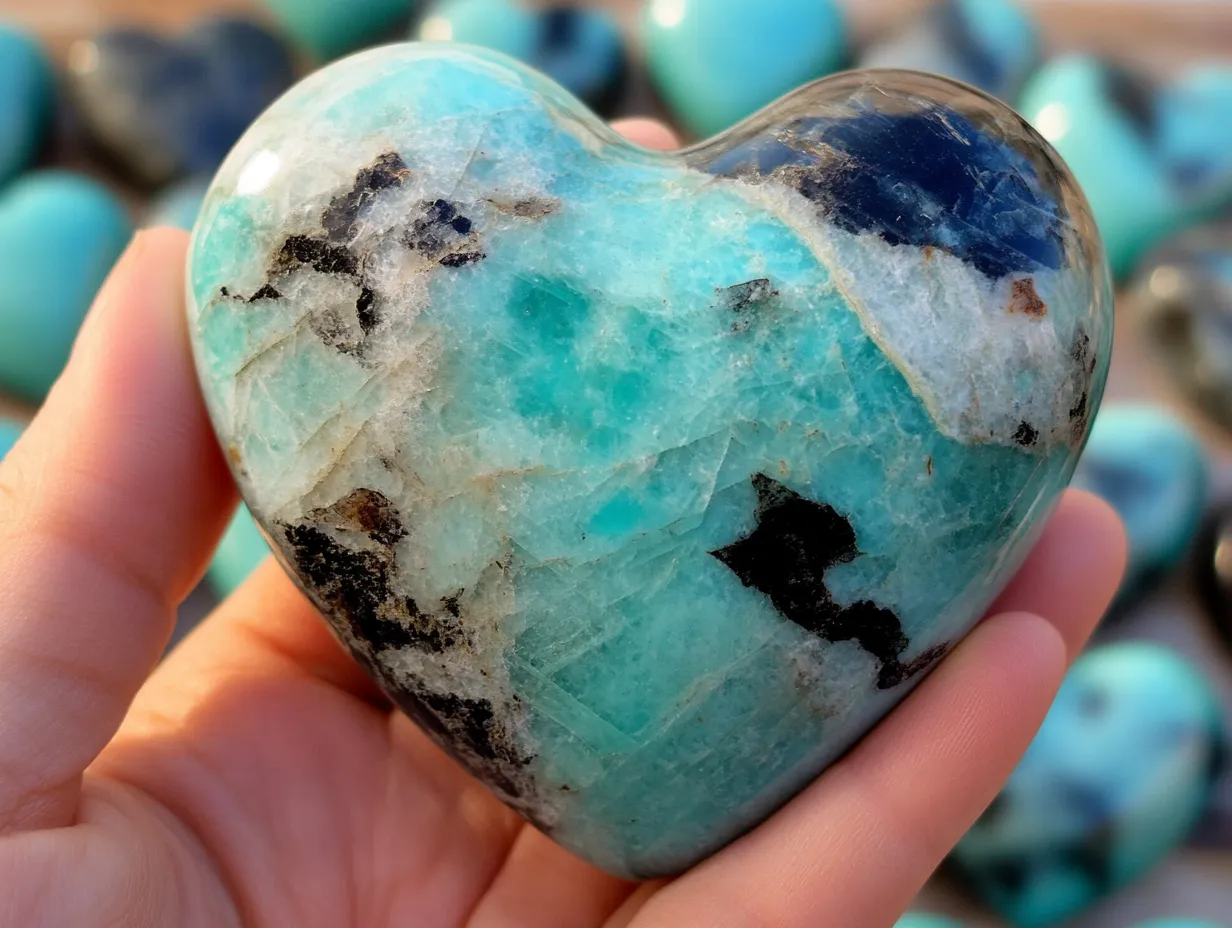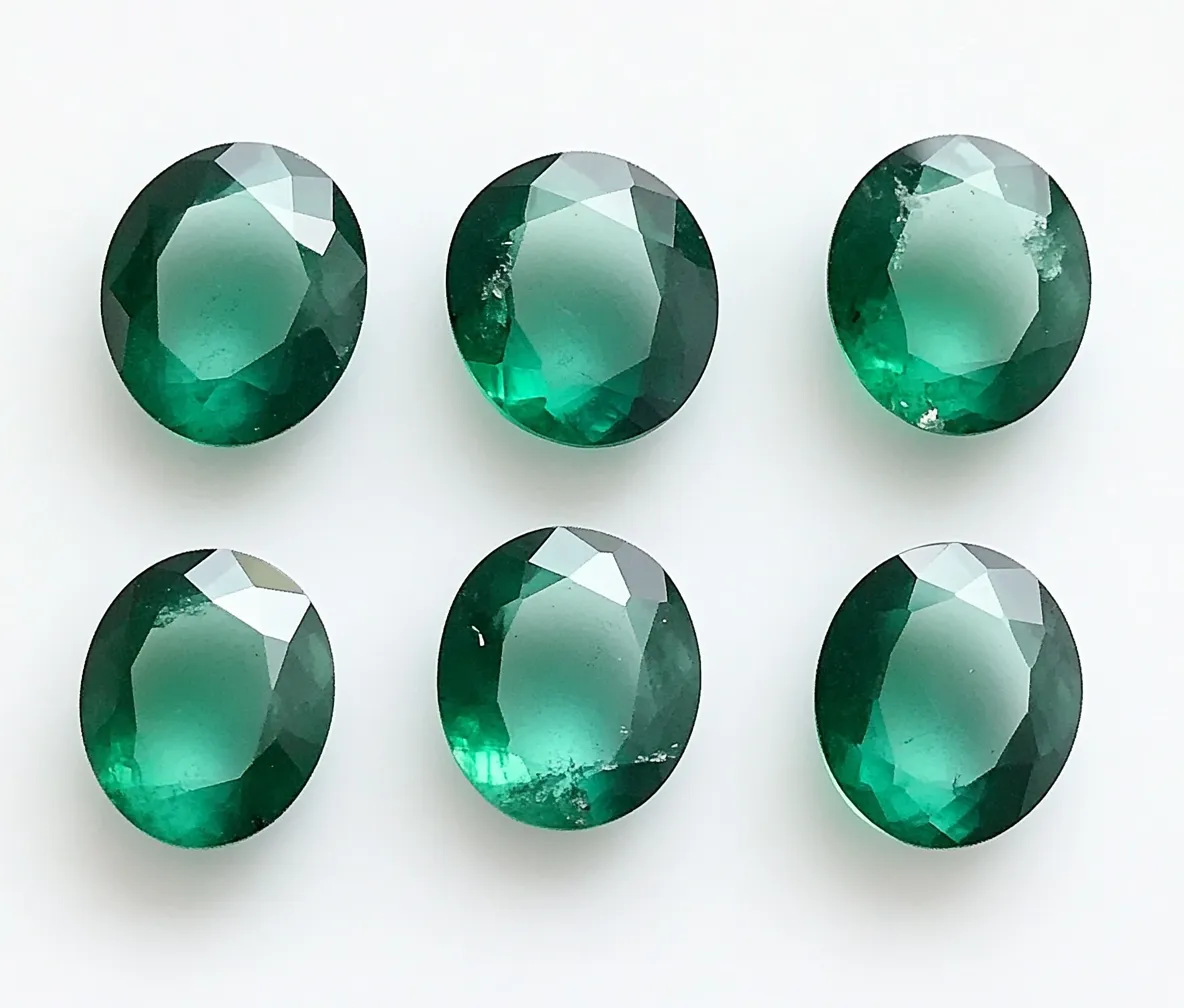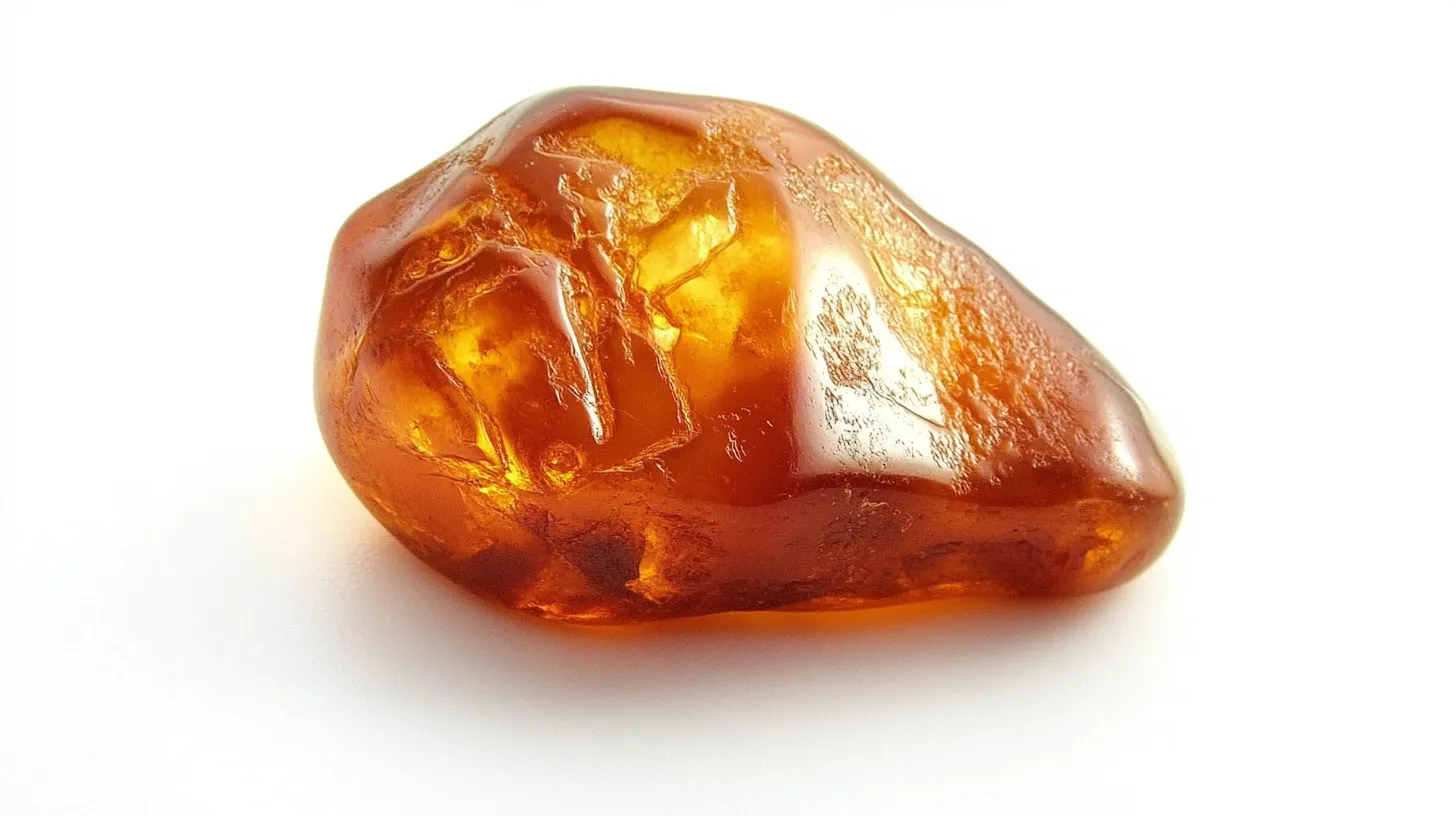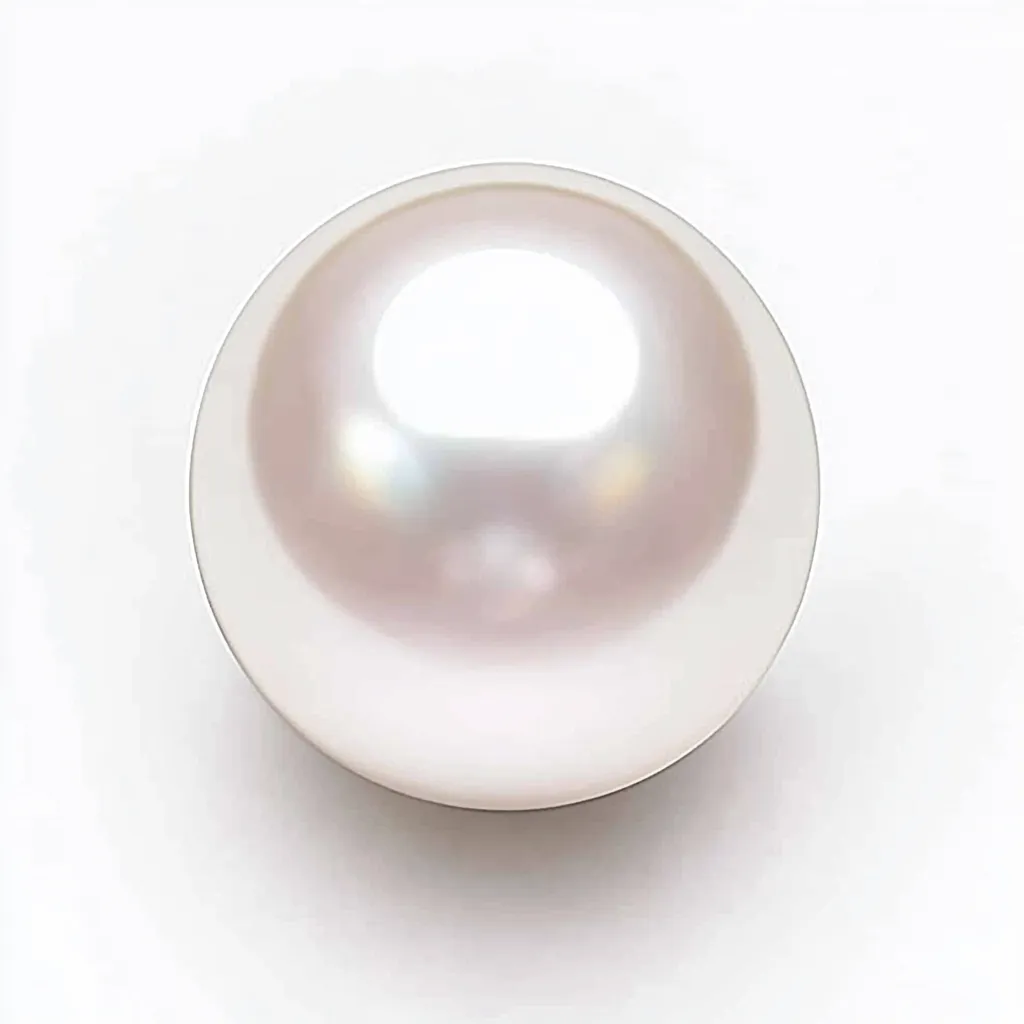Pearl Gemstone
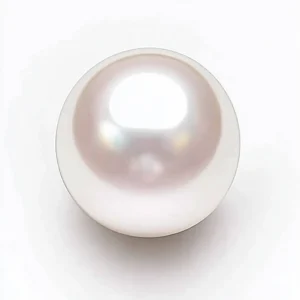

Pearl Gemstone Meanings and Introduction
The pearl gemstone is linked to purity, wisdom, and wealth. In contrast to most gemstones that are extracted from the earth, pearls are a special bounty of the sea, formed naturally inside mollusks. They are sea treasures. We are lucky to have oysters as part of our biodiversity. They remind us that we need healthy marine ecosystems. Oysters are also a reminder of our role in the conservation and restoration of marine ecosystems. Emotional balance and calm are associated with pearls. They have long been a source of comfort, and many consider them to be a pathway to inner peace. Inhale the calming energy of the pearl to soothe your mind and bring emotional healing.
History of the Pearl Gemstone
A rich and enthralling history surrounds pearls. For thousands of years, they were considered the most precious of gemstones, even more valuable than diamonds in some ancient cultures. The earliest known pearl jewelry dates back to 2300 BC in the Mesopotamian region. Since then, pearls have been treasured across the world, worn primarily by royalty and the elite.
Indeed, throughout history, pearls were so rare and valuable that only the wealthiest could afford them. Ancient Chinese emperors adorned themselves with pearls as symbols of divine power. Cleopatra is famously known for using lovely pearls to make a stunning impression on Julius Caesar and Marc Antony. European aristocrats during the Renaissance wore extravagant jewelry made from pearls to signal their status and wealth.
Over time, pearls have evolved from being symbols of exclusivity to something that can be found in both casual and high-end jewelry. Yet, pearls retain a timeless quality.

Table 1: Famous Historical Uses of Pearls
| Era/Period | Usage/Significance |
|---|---|
| Ancient Mesopotamia | First known pearl jewelry (2300 BC) |
| Ancient China | Worn by emperors as symbols of divine power |
| Cleopatra’s Egypt | Used to impress Julius Caesar and Marc Antony |
| Renaissance Europe | Worn by aristocrats to signify status and wealth |
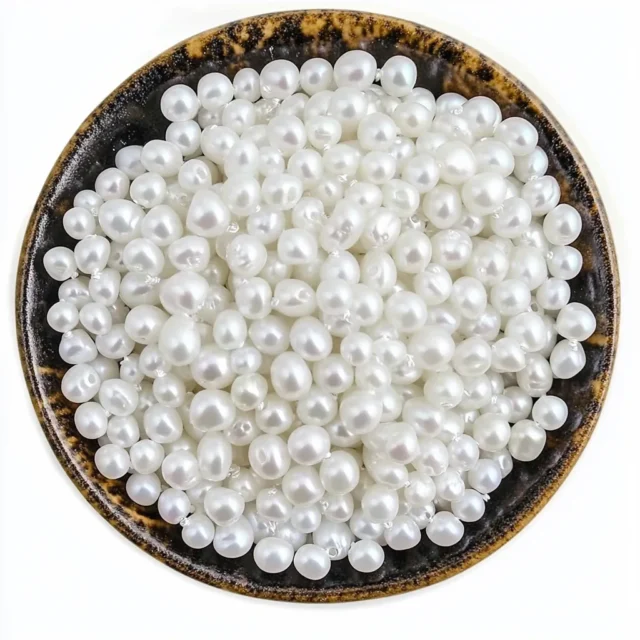
Physical Properties of Pearl Gemstone
One of the very few kinds of gemstones that do not require cutting and polishing to enhance their beauty, pearls form in the soft tissue of mollusks, typically oysters, through a process of natural secretion. With no specific plan in mind, the mollusk starts to cover an irritant that has entered its shell with layer after layer of this material, producing a result that is smooth and yielding an impressive luster and mother-of-pearl glow.
Mostly composed of calcium carbonate, pearls can be pretty much any color. The common hues are white, cream, and black. But individual pearls come in different shades, from yellowish and pinkish to some strange green that glows even in darkness. Though their colors differ, all pearls glow with similar luster and depth. No two pearls are formed in exactly the same way. Thus, every pearl is unique.
Table 2: Common Pearl Colors
| Color | Description |
|---|---|
| White | Classic and most common color |
| Cream | Soft and warm shade of white |
| Black | Deep and mysterious |
| Pink | Subtle and delicate |
| Yellowish | Light golden tone |
| Green | Unusual and glowing in the dark |

Pearl Gemstone’s Healing Properties and Benefits
For centuries now, pearls have been regarded as possessing healing properties that considerably exceed their aesthetic value. In the world of alternative medicine, they serve as a common means of promoting emotional and spiritual well-being—all because they are thought to possess special energies that calm the wearer.
One of the most well-known benefits of wearing pearls has to do with their ability to calm the mind. People truly believe that pearls help to reduce stress, anxiety, and generally all forms of emotional turbulence from the life of the wearer. The calming effect is supposedly why pearls are often recommended for just about any emotional transition—grief, for instance, that might leave one lost in an emotional maelstrom. Unbelievably, this purported effect also explains why cotton candy could have served as a suitable substitute (see above).
Furthermore, pearls are thought to help with digestion and the balance of bodily fluids. In fact, a powdered form of pearl (known in tidbit 1 as “serpentine”) is a common ingredient in some ancient herbal elixirs and tonics. On top of that, some might advise you to mix the powder with crab meat during a crab feast, as both are said to boost one’s appearance—in the way of skin health, particularly. This can lead to a radiant glow and other benefits.
Last but not least, the aforementioned pearl power extends to relationships, especially romantic partnerships and familial bonds. Whether in love, friendship, or family dynamics, pearls are supposedly a powerful charm for bringing peace and harmony to otherwise tumultuous relationships.

Types of Pearl Gemstones
The most exciting aspect of pearl gemstones is their wonderful variety. There are several sorts of pearls, each with its own distinct features and characteristics that make it stand out.
Natural Pearls
The most prized and rarest of pearls, natural pearls, form in the absence of human intervention. Natural pearls develop inside the shells of oysters and mussels in response to an irritant, and their formation involves no human artistry. Today, natural pearls are astonishingly rare, and their absence in the marketplace has pushed artificial and cultured varieties to the forefront.
Comparison of Natural and Cultured Pearls
| Feature | Natural Pearls | Cultured Pearls |
|---|---|---|
| Formation Process | Occurs naturally without human interference | Human-induced by inserting an irritant |
| Rarity | Extremely rare | More common but still valuable |
| Surface Quality | Often irregular | Usually smoother and more uniform |
| Market Availability | Limited | Widely available |
Cultured Pearls
Cultured pearls are made by people. In the process, a small bead or piece of tissue is inserted into an oyster to get it to make a pearl. Although they are more plentiful than natural pearls, cultured pearls are still prized, especially when they have the very high luster and smooth surfaces that make them top-grade items.
Freshwater Pearls
In contrast to saltwater pearls, freshwater pearls are formed in freshwater mussels. Generally, freshwater pearls are less costly than saltwater varieties, yet they can still be quite stunning. One hallmark of the freshwater pearl is its broad spectrum of colors. These pearls can be found in shades ranging from white to lavender and pink.
South Sea Pearls
South Sea pearls are recognized for their impressive size and their striking, luxurious look. They come mainly from oysters found in the warm waters of the South Pacific. Their colors run from white to golden, and they are regarded as one of the most valuable types of pearls.

Tips to Cleanse Your Pearl Gemstone
Maintaining the beauty and spiritual energy of your pearl gemstone is essential for its cleansing. Pearls are delicate and require proper care, similar to that given to a rare and precious item. Here are some tips for keeping your pearls looking their best.
Gentle Cleaning
After each use, wipe your pearls with a soft, damp cloth. They must be cleaned gently and thoroughly, but without any harsh chemicals or sonar waves that are used in regular jewelry cleaners, since those can wreak major havoc on the not-so-tough surface of a pearl. On occasion, and if necessary, give your pearls a very gentle wash in some warm (not hot!) soapy water and then a good two-part rinse: first in warm water, then in cool. And definitely dry them thoroughly. Use a hair dryer on low heat to ensure thorough drying, but avoid placing it too close to the pearls.
Avoid Heat and Chemicals
Both heat and harsh chemicals can damage pearls. Do not wear them when you might be exposed to intense perfumes, hairsprays, or potent cleaning agents. When you’re not adorning yourself with pearls, keep them stored in a soft cloth bag or a padded jewelry box. Doing so will minimize the risk of scratching that could mar that lustrous surface.
Pearl Care Do’s and Don’ts
| Care Aspect | Do’s | Don’ts |
|---|---|---|
| Cleaning | Use a soft, damp cloth | Use harsh chemicals or ultrasonic cleaners |
| Storage | Keep in a soft pouch or cloth bag | Store with other jewelry that may scratch them |
| Exposure | Wear after applying perfumes or hairsprays | Expose to heat, harsh sunlight, or chemicals |
| Energy Cleansing | Place under moonlight or in saltwater | Use aggressive cleaning methods |
Recharging the Energy
Besides washing your pearls physically, it is also essential to cleanse the spiritual energy of them. You can do this by putting them under the moonlight or in a bowl of clear water with a pinch of sea salt. This approach can help return their natural energy to them and remove any negativity they might have absorbed.

Pearl Gemstone Meanings in Divination
In a number of spiritual practices—especially in the art of divination—pearls have strong and potent meanings. Across many cultures, pearls are considered symbols of wisdom, balance, and emotional well-being. They are considered the excellent way to represent true, deep, and pure qualities.
Wisdom and Intuition
Wisdom and intuition are often thought to be enhanced by pearls in their use in divination. They are held to be able to bring about a state of more profound heart and mind knowledge, making the more typical decision pathways taken by individuals less likely and thus making the decisions themselves more thoughtful and perhaps more well-reasoned for the pearls’ respective users. Furthermore, pearls are said to help one connect with the wisdom inherent to one’s personality and life journey, thus making them a good recommendation for anyone who is asking for a life decision to be more well-defined.
Emotional Healing
Pearls are esteemed as potent implements for emotional healing. Their soft energy can calm the spirit, allowing negative emotions like fear, anger, and grief to be discharged. When used in divination, pearls are believed to help in achieving emotional equilibrium and promoting a state of inner peace.
Protection and Purity
Numerous societies see pearls as guardians for those who wear them. They are thought to guard against negative energies and to encourage the purity that should exist in both the heart and the mind. For a long time, pearls have been part of rituals in which they are used to divinity, in which the aura is cleansed with the intent of making it more likely that harmful influences will not reach the person.

Pearl Gemstones and Angels
In spiritual practices, pearl gemstones are frequently linked with angelic energies. Their tender and calm vibrations are said to help individuals connect with higher planes of existence. For this reason, pearls serve well as gemstones for anyone seeking advice from angels.
Angelic Guidance
Angelic communication is an important aspect of the life of meditators and those who pray. Pearls are conduits of that communication, carrying the energies of the angels from their realm to ours. They are powerful, calming beads to use in any form of angelic communication; holding or wearing them while meditating or praying makes one an even stronger invitation to make angels a part of your life.
Healing with Angels
Pearls also function with angelic healing. If one is working through emotional trauma or seeking to release negative energies, pearls can channel angelic healing vibrations. The pearl’s softness is said to ease both physical and emotional pain, making it a gentle yet effective stone for healing.
Manifestation and Protection
In certain spiritual practices, the use of pearls is not limited to adornments or offerings; they also feature in the rituals of manifestation. It is believed that they amplify intentions and ensure that the intentions are in alignment with the highest good. Positive change can be brought about through manifestation, and there appears to be a direct connection between this process and angels.

Questions and Answers
Other Details About Pearl
Pearl Value
Several things determine the value of a pearl: luster, size, shape, surface quality, and origin. Pearls that have a high luster and smooth surfaces, as well as round shapes, are the most desirable. Because of their large size and rich luster, South Sea pearls are some of the most expensive. Natural pearls, especially those that have some historical significance, can bring in some serious money at auctions.
Fake Pearls
Commonly, imitation pearls are made from either glass or plastic, which are coated to mimic the look of actual pearls. The “tooth test” is the easiest method to determine if a pearl is genuine. This involves rubbing the pearl gently against your teeth. If the pearl is real, it should feel slightly gritty, due to the pearl’s natural layered structure. If the pearl is smooth, it’s a fake. Another way to tell if a pearl is real is to assess its luster. Real pearls have an otherworldly quality to their luster that fakes simply don’t possess.
Birthstone Pearl
The pearl is the birthstone of June. It symbolizes purity, wisdom, and serenity. Pearls’ organic nature sets them apart from the other birthstones; they are formed by mollusks. Ancient cultures didn’t distinguish pearls from the birthstones of other months. Believing that pearls carried protective and healing properties, they made and bestowed pearl jewelry as gifts for those born in June.
World’s Largest Pearl
The Pearl of Puerto Princesa, the largest known pearl, weighs around 34 kilograms (75 lbs) and was found in the Philippines. This astonishingly large pearl sat under a fisherman’s bed for years—its incredible size unknown until the fisherman revealed it. Unlike traditional round pearls, the Pearl of Puerto Princesa has an irregular shape, making it a natural wonder rather than a piece of jewelry.
Saltwater vs. Freshwater Pearls
Generally, saltwater pearls have a higher luster, smoother surfaces, and more defined shapes than their freshwater counterparts, which often display irregular forms and softer sheens. Although saltwater pearls take longer to develop, resulting in higher prices, freshwater pearls are more affordable and come in various natural pastel colors.
| Comparison | Saltwater Pearls | Freshwater Pearls |
|---|---|---|
| Luster | Higher | Softer sheen |
| Shape | More defined | Often irregular |
| Development Time | Longer | Shorter |
| Price | More expensive | More affordable |
| Colors | Classic white, gold, black | Various pastel shades |
Norway’s Pearl Location
Pearl farming is not a traditional Norwegian industry, but there are rare instances of freshwater pearls found in the country’s rivers. For centuries, Norwegian rivers—like the Tana River—were renowned for the production of wild, natural pearls. Today, however, the once-thriving strip of pearl-diving locations in the Tana has been closed off to divers, and natural Norwegian pearls of any kind are so rare that they’re virtually nonexistent.
Blue Pearl Stone
Often connected with Tahitian pearls, blue pearls are a rare and fascinating variety. Their deep blue color, with some green or violet overtones, comes from the unusual pigmentation of the black-lipped oyster (Pinctada margaritifera), which produces these pearls. Jewelry collectors who covet unusual colors in their pearl collections absolutely seek blue pearls.
Price of a Black Pearl
Tahiti’s black pearls range in cost from $200 to more than $10,000, depending on their size, luster, and quality. They are most often found to be baroque in shape; therefore, the value of a strand of them would usually average a few thousand dollars.
Best Pearls in the World
Japanese Akoya pearls are among the most exquisite of all pearls. They are prized for their flawless round shapes and for their mirror-like luster. South Sea pearls—mainly from Australia, Indonesia, and the Philippines—are the largest of all pearls and the most valuable. Tahitian pearls, with their exotic dark shades, add an element of mystery and sophistication to fine jewelry.
Pearl’s Meaning in the Bible
In the Holy Scripture, pearls stand for sagacity, spiritual opulence, and heavenly veracity. The “Pearl of Huge Worth” (Matthew 13:45-46) is a simile for the Paradisiacal Kingdom, underscoring the incomprehensible cost of maintaining faith and securing salvific existence. Pearls have been connected with chastity since time immemorial, and in bygone eras, they were employed in the construction of sacred objects.
Opal vs. Pearl
Opals and pearls are both beautiful but are entirely different kinds of gemstones. Pearls are organic gemstones made by mollusks, while opals are mineral gemstones made from silica and water. The colors in opals are more vibrant than any colors that could be found in a pearl, but the opal itself is not as durable as a pearl. To enjoy wearing an opal, a jewelry maker must accept that it requires the same amount of care as a child.

